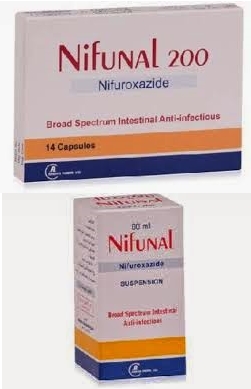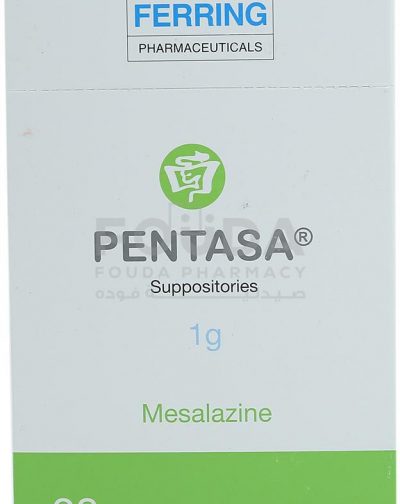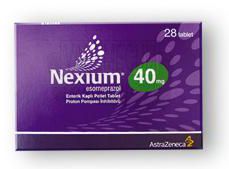- لا يوجد منتجات
-
NIFUNAL 4% SUSP 60 ML
EGP10.50
* Gastro-resistant tablets.
* Therapeutic indications: Nexium tablets are indicated for:
& & # Gastroesophageal Reflux Disease (GERD):
& & – treatment of erosive reflux esophagitis.
& & – long-term management of patients with healed oesophagitis to prevent relapse.
& & – symptomatic treatment of gastro-oesophageal reflux disease (GORD).
& & # In combination with appropriate antibacterial therapeutic regimen for the eradication of
& & Helicobacter pylori and
& & – healing of duodenal ulcer associated with Helicobacter pylori and
& & – prevention of relapse of peptic ulcers in patients with Helicobacter pylori associated ulcers.
& & # Patients requiring continued NSAID therapy:
& & – healing of gastric ulcers associated with NSAID therapy.
& & – prevention of gastric and duodenal ulcers associated with NSAID therapy in patients at risk.
* CONTRAINDICATIONS:
& & – Known hypersensitivity to esomeprazole, substituted benzimidazoles or any other constituents
& & of the formulation.
& & – Esomeprazole like other PPIs should not be administered with atazanavir.
* Special warnings and special precautions for use:
& & – In the presence of any alarm symptom (eg. significant unintentional weight loss, recurrent vomiting,
& & dysphagia, haematemesis or melaena) and when gastric ulcer is suspected or present, malignancy
& & should be excluded, as treatment with Nexium may alleviate symptoms and delay diagnosis.
& & – Patients on long-term treatment (particularly those treated for more than a year) should be kept under
& & regular surveillance.
& & – Patients on on-demand treatment should be instructed to contact their physician if their symptoms change
& & in character. When prescribing esomeprazole for on demand therapy, the implications for interactions
& & with other pharmaceuticals, due to fluctuating plasma concentrations of esomeprazole should be considered.
& & – When prescribing esomeprazole for eradication of Helicobacter pylori possible drug interactions for all
& & components in the triple therapy should be considered. Clarithromycin is a potent inhibitor of CYP3A4
& & is used in patients concurrently taking other drugs metabolised via CYP3A4 such as cisapride.
& & – This medicinal product contains sucrose. Patients with rare hereditary problems of fructose intolerance,
& & glucose-galactose malabsorption or sucrase-isomaltase insufficiency should not take this medicine.
* Pregnancy and lactation:
& & – For Nexium, limited clinical data on exposed pregnancies are insufficient. Caution should be exercised
& & when prescribing to pregnant women.
& & – It is not known whether esomeprazole is excreted in human breast milk. No studies in lactating women
& & have been performed. Therefore NEXIUM should not be used during breast-feeding.
* Effects on ability to drive and use machines:
& & No effects have been observed.
* Posology and method of administration:
& & – The tablets should be swallowed whole with liquid. The tablets should not be chewed or crushed.
& & – For patients who have difficulty in swallowing, the tablets can also be dispersed in half a glass of
& & non-carbonated water. No other liquids should be used as the enteric coating may be dissolved.
& & Stir until the tablets disintegrate and drink the liquid with the pellets immediately or within 30 minutes.
& & Rinse the glass with half a glass of water and drink. The pellets must not be chewed or crushed.
& & – For patients who cannot swallow, the tablets can be dispersed in non-carbonated water and administered
& & through a gastric tube. It is important that the appropriateness of the selected syringe and tube is
& & carefully tested.
& & # Gastro-Oesophageal Reflux Disease (GORD):
& & . Treatment of erosive reflux oesophagitis: 40 mg once daily for four weeks.
& & An additional 4 weeks treatment is recommended for patients in whom oesophagitis has not healed or
& & who have persistent symptoms.
& & . Long-term management of patients with healed oesophagitis to prevent relapse: 20 mg once daily.
& & . Symptomatic treatment of gastro-oesophageal reflux disease (GORD): 20 mg once daily in patients
& & without esophagitis. If symptom control has not been achieved after four weeks, the patient should
& & be further investigated. Once symptoms have resolved, subsequent symptom control can be achieved
& & using an on demand regimen taking 20 mg once daily, when needed. In NSAID treated patients at risk
& & of developing gastric and duodenal ulcers, subsequent symptom control using an on demand regimen
& & is not recommended.
& & # In combination with appropriate antibacterial therapeutic regimen for the eradication of Helicobacter pylori and
& & – healing of duodenal ulcer associated with Helicobacter pylori and
& & – prevention of relapse of peptic ulcers in patients with Helicobacter pylori associated ulcers.
& & 20 mg NEXIUM with 1 g amoxicillin and 500 mg clarithromycin, all twice daily for 7 days.
& & # Patients requiring continued NSAID therapy:
& & – Healing of gastric ulcers associated with NSAID therapy: The usual dose is 20 mg once daily for 4 to 8 weeks.
& & – Prevention of gastric and duodenal ulcers associated with NSAID therapy in patients at risk: 20 mg once daily.
& & # Children and Adolescents 12-18 years. Nexium should not be used in children since no data is available.
& & # Impaired renal function: Dosage adjustment is not required in patients with impaired renal function.
& & Due to limited experience in patients with severe renal insufficiency, such patients should be
& & treated with caution.
& & # Impaired hepatic function: Dose adjustment is not required in patients with mild to moderate liver impairment.
& & For patients with severe liver impairment, a maximum dose of 20 mg NEXIUM should not be exceeded.
& & # Elderly: Dose adjustment is not required in the elderly.
* To be taken as directed by the physician.
* Do not store above 30 degrees C.
* The tablets should be swallowed whole with water or dispersed in non-carbonated water. Do not chew or crush the pellets in the tablets.









المراجعات
لا توجد مراجعات بعد.